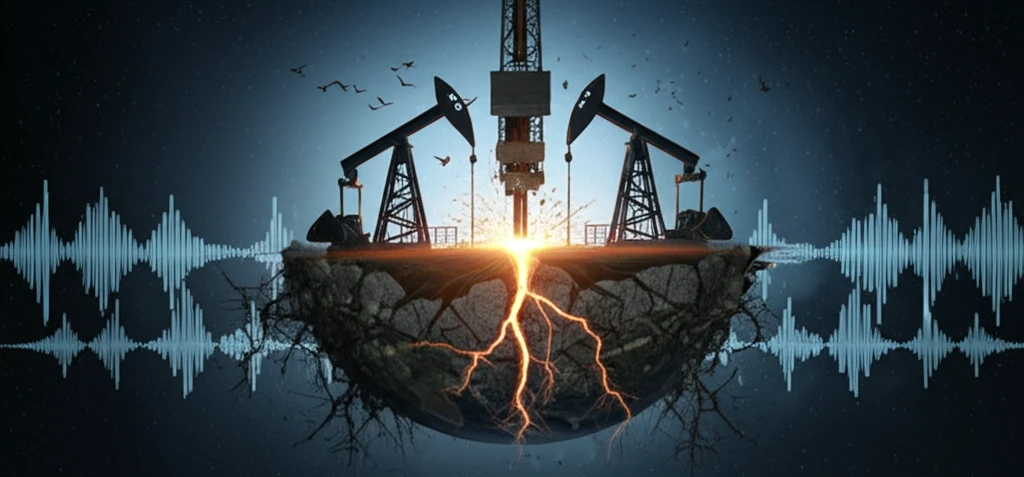
Fracking and Earthquakes: What's the Real Deal?
"Uncover the science behind hydraulic fracturing and its surprising connection to fault activity."
Hydraulic fracturing, commonly known as fracking, is a key method used to extract shale gas. This process involves injecting high-pressure fluids into gas-bearing reservoirs, creating fractures in the rock to release natural gas. While fracking has boosted energy production, its potential impact on the surrounding geology is a growing concern.
The central issue revolves around whether fracking can trigger seismic activity, particularly earthquakes. High-pressure fluid injection can alter the stress field in the subsurface, potentially activating dormant faults. This raises significant questions about the safety and sustainability of fracking operations, especially in areas near populated regions.
Recent research has focused on understanding these risks. By using sophisticated computer models, scientists are simulating how fracking affects fault lines, assessing the likelihood of induced earthquakes, and determining the factors that make certain areas more susceptible to seismic events. These studies aim to provide valuable insights for regulators and industry professionals to mitigate potential hazards.
How Does Hydraulic Fracturing Really Work?

At its core, fracking is a method to enhance the permeability of shale rock, allowing natural gas to flow more freely. The process involves drilling deep wells into shale formations and then injecting a mixture of water, sand, and chemicals at extremely high pressure. This creates fractures in the rock, which are held open by the sand particles, enabling gas to escape and be collected.
- Pore Pressure Increase: Fluids injected during fracking elevate pore pressure in surrounding rocks.
- Fault Lubrication: Increased pore pressure reduces effective stress on faults, making them easier to slip.
- Stress Field Disturbance: Fracking alters the natural stress balance, which can destabilize nearby faults.
Balancing Energy Needs with Environmental Responsibility
The debate around fracking and induced seismicity highlights the need for a balanced approach. While hydraulic fracturing can provide access to valuable energy resources, it's crucial to minimize the potential risks to communities and the environment. Ongoing research, improved regulations, and responsible operational practices are essential to ensure that fracking is conducted safely and sustainably. The future of energy depends on finding solutions that protect both our planet and our society.
